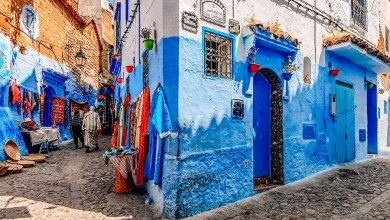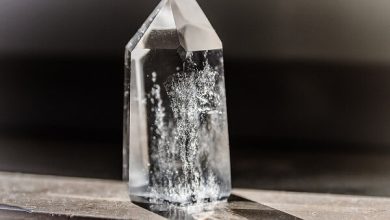What is there to do in Rabat? Rabat’s Top 20 Things to See and Do
Rabat has a welcoming and personal atmosphere that tourists will not find in other Moroccan cities.
Beautiful gardens, royal palaces, and well-preserved ancient buildings abound in the open-minded city, but getting lost in the meandering lanes that give a respite from the international hordes who go to Marrakech and Fes is one of the most pleasurable experiences.
Whether you’re exploring the old Medina or surfing the waves along the shore, crowds are not just small but also made up of more residents than visitors. This is especially evident while visiting Salé and the Agdal-Ryad areas, which are populated by working-class Moroccans.
Diverse sights, distinctive festivals, and friendly residents add to the experience, and visitors from all walks of life will discover that Rabat has a lot to offer.
1. See the Grand Hassan Tower and Mohammed V’s Mausoleum.
The Moroccan monarch Yacub al-Mansur took the bold decision to build the world’s biggest mosque in the 12th century.
Al-Mansour died before the project was completed, suspending work for centuries; nonetheless, the surviving minaret, now known as the Hassan Tower, had already become one of the world’s most spectacular structures.
In 2012, UNESCO acknowledged the structure’s significance and proclaimed it a protected World Heritage site in order to conserve the huge complex and sophisticated architectural feat.
Visitors may now explore the remains that run all the way to Mohammed V’s and his sons’ tombs. This site is often at the top of vacationers’ choices when determining what to do in Rabat.
Visitors, including non-Muslims, are welcome to see the tomb’s interior; nevertheless, tourists are advised to be quiet and polite, since the mausoleum is the former King’s last resting place and is guarded by the Moroccan Royal Guard.
The Hassan Tower is situated near the Jardin Tour Hassan on the northeast corner of the Quartier Hassan. The elaborate tomb is located at the far end of the grounds, abutting Avenue Tour Hassan.
2. Pamper yourself in a Traditional Hammam
Even if it’s just for an hour or two, a day of pampering on vacation is always a good idea. For a day of leisure, there are many exquisite spas, mostly in high-end hotels, and most, if not all, provide traditional steam baths known as hammams.
During the treatment, staff wash and exfoliate visitors with hot water in a steamy chamber, leaving their skin velvety smooth. Traditional spa services such as facials and massages may be added for a complete day of relaxation.
Many riads also provide hammam treatments, massages, and facials at a fraction of the cost of luxury hotels.
3. Visit the Kasbah des Oudaias, an ancient Moroccan fortress.
While Chefchaouen is known for its magnificent blue structures, the Kasbah des Oudaias in Rabat has the same spectacular cobalt blues on homes and parts of walls across the ancient city. To visit the Kasbah des Oudaias book your 3 days tour from Marrakech to Merzouga Desert.
The Kasbah des Oudaias is the ancient location of Rabat, built on a rock overlooking both the Atlantic Ocean and the Bou Regreg River.
Exploring the city on foot necessitates passing through the city’s large ornate gates, and it’s the only way to see the minor beauties that dot the streets, such as stunning hand-painted doors and ceramics on exhibit.
The neighborhood is now mostly residential, however there are a few shops selling carved wooden souvenirs. Gnawa musicians play their instruments in the small alleyways, contributing to the magical ambience that pervades the walls.
The Kasbah des Oudaias is a little city inside a city, and tourists will discover some of the most intriguing things to do in Rabat within its walls.
The Kasbah and the adjacent attractions, including as the Andalusian Gardens, the National Craft Museum (also known as the Oudaias Craft Museum,) and Rabat Beach, may easily fill a day.
4. Take a stroll around Rabat’s Old Medina’s narrow streets.
The medieval Medina in Rabat is one of the most famous tourist attractions in Morocco. The visuals most people connect with the nation are tiny, twisting lanes and closely packed market booths overflowing with homemade items and unique cuisine.
While it may not have the same hectic, claustrophobic atmosphere as other Moroccan towns’ souks, Rabat’s Medina makes up for it in charm and ease of navigation.
Many of the people roaming the aisles are locals, giving the experience a more personalized feel. Haggling with shop owners is frequently less aggressive than in Morocco’s three other Imperial Cities, and many of the people strolling the aisles are locals, giving the trip a more personalized feel
This Medina is also known for its Rabati carpets. These gorgeous handmade objects, which are more evocative of Turkish carpets than conventional Moroccan or Berber rugs, make for distinctive mementos.
The ancient Medina is located slightly inland of the Bou Regreg River near the old city center. Because Rabat is such a tiny city, many guests will be able to stroll from their hotel to the historic Medina.
The souks are ideal for buying souvenirs, so travellers should schedule their visit to the ancient Medina at the conclusion of their journey, when they may fulfill all of their shopping demands.
5. Relax in the tranquil Andalusian Gardens while sipping mint tea.
The Andalusian Gardens, located at the entrance of the Kasbah des Oudaias, provide a peaceful respite from the city’s bustle. The French constructed and put out the lovely gardens with fruit trees, flowers, and exotic vegetation during Morocco’s colonial era.
Visitors will discover a modest café within the walled garden that serves mint tea and light nibbles while overlooking the sea. The big trees provide enough shade, making this an ideal spot to cool down on a hot day while still enjoying the outdoors.
It is a pleasant stop when seeing other surrounding sights, since it is located just outside of the Medina in the historic portion of the city.
6. Visit the Oudaias Craft Museum to learn about ancient Berber art.
The Oudaias Craft Museum, located inside the Kasbah des Oudaias, educates tourists about Morocco’s historic arts and crafts.
The museum’s most popular exhibits are traditional Berber carpets made of wool and camel hair, but it also has jewelry, ceramics, musical instruments, and even traditional Moroccan clothes.
Moulay Ismail constructed the museum’s well-preserved edifice in the 17th century. For art lovers, visiting the museum is a must, and it’s a great way to pass the time when the weather isn’t cooperating.
7. Rabat Beach & Oudayas Surf Club are great places to learn to surf.
One of the most popular things to do in Rabat, like Casablanca, is to surf, and Rabat Beach in the city’s northwestern corner offers plenty of options.
Views of the fortified Kasbah des Oudaias built on a rock overlooking the river contrast with the red-tinged sand.
Even when the beach is busy, the setting provides for wonderful photography. The cold Atlantic water is a pleasant relief from the summer heat, while the off-season provides a more tranquil stroll down the shore.
Visitors looking for something to do in Rabat might pay a visit to the Oudayas Surf Club, which is situated between Rabat Beach and the Rabat Lighthouse. King Mohammed VI was one of the founding members of one of Morocco’s first surf clubs.
Visitors may enjoy spectacular ocean views from the clubhouse and café, or take a surf lesson.
8. Photograph the Atlantic Ocean and the Rabat Lighthouse
There are many ocean-related activities in Rabat, but seeing the gorgeous Rabat Lighthouse is possibly the most calming.
The 79-foot tall beacon, which stands at a short distance from Rabat Beach, was erected in 1920 to warn sailors of the rocky cliff off the coast of Rabat.
Travelers may enjoy spectacular views of the Atlantic Ocean while walking along the shore with few other tourists. The lighthouse is especially beautiful when the sun sets, and it’s just a short walk from a number of eateries surrounding Rabat Beach.
The park’s gardens are home to a wide variety of flora, both local to the Rabat region and exotics, and the park’s staff, who provide Moroccan Desert tours of the site, are well-versed in both crocodiles and plants.
9. Visit the ancient city of Chellah.
Visitors will locate the Chellah, a historic medieval settlement on the banks of the Bou Regreg River, on the outskirts of Rabat. The site has been occupied by several peoples throughout history, beginning with the Phoenicians who utilized it as a trade post.
Later, the Romans established Sala Colonia, a Christian city that served as the empire’s center throughout the second century.
Berbers, Arabs, and Byzantines all utilized the site for various reasons throughout the years, notably as a royal burial place for the Berber Almohads and a necropolis for the Marinids.
The area has now been rebuilt into a garden where tourists may examine the old remains left behind by many civilizations throughout the years. Visiting the Chellah is still one of the most popular things to do in Rabat, despite the fact that many of the buildings were destroyed by an earthquake in Lisbon in 1755.
The Jazz au Chellah event and the Mawazine Music Festival both take place at the Chellah. In a unique outdoor environment, the yearly festivals showcase traditional and jazz music.
Travelers who are fortunate enough to come around this period will have a unique experience dancing amid ancient ruins to the songs.
10. Attend a Performance at One of Rabat’s Theaters
Rabat’s image as Morocco’s cultural capital is growing, and the country’s authorities are seeking to extend chances to support the arts. The Grand Theatre de Rabat, an architectural marvel created by Zaha Hadid, is the newest addition to the performing arts scene.
The Grand Theatre’s architecture is almost as stunning as the project itself, and with 1,822 seats in the main multi-purpose space, it will be able to handle big crowds for a variety of shows.
The theater will also include various stores, cafés, and a restaurant with views of the Bou Regreg River when it is finished. Dinner and a performance with panoramic views will be available to visitors wondering what to do in Rabat in the evenings at this big construction.
Visitors may continue see live performances at the Mohammed V National Theater in the Quartier Hassan until the Grand Theatre opens officially.
The tiny theater, which is situated near the Nouzhat Hassan Garden and 7th Art Cafe, hosts a range of acts, including ballets, symphonies, and more, and is close enough to restaurants and other attractions to organize an entire itinerary around a performance.
11. Take a boat ride from Bou Regreg to Salé.
Several colorful rowboats line the beaches of the Bou Regreg River where it joins the Atlantic Ocean near the Kasbah des Oudaias. For a few dirhams, several of the boat owners would transport inhabitants and tourists over the river to nearby Salé.
The trip across the river is relaxing, and the picture possibilities are endless thanks to the brightly colored boats that float by. The trip is especially gorgeous at sunset, and couples searching for romantic things to do in Rabat should make time for it.
12. Dine and drink on a vintage boat
Le Dhow, an antique wooden boat with pirate sails that goes back to the 17th century, is docked near the Kasbah des Oudaias. Inside the historic ship, diners will be surprised to discover an excellent dining area as well as cozy lounging sofas on the top decks.
Visitors may opt from a complete tasting menu or just stop by for beverages; either way, the unique experience is one of the best things to do in Rabat.













